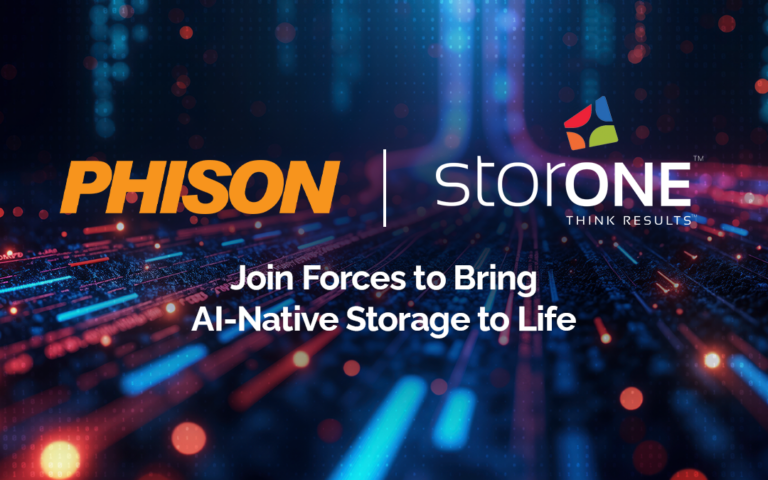As data continues its exponential growth, enterprises are facing competing demands – the need for high performance storage to power data-intensive workloads, and the necessity to rein in storage costs at scale. Solid state drives (SSDs) offer blazing speed but premium pricing, while hard disk drives (HDDs) provide cost-effective capacity but lackluster performance. The ideal lies in a Goldilocks zone – flash-like performance at only a slightly higher price point than HDDs. StorONE has cracked this enigma with a no-compromise solution through its innovative software-defined architecture and advanced data tiering algorithms, Optimized Data Placement.
At the core is StorONE’s proprietary Virtual Storage Container technology, which abstracts hardware from software to eliminate proprietary storage lockdown. This software layer allows StorONE to fully utilize the latest storage hardware advancements from any vendor.
The magic happens through StorONE’s intelligent multi-tier data placement, which represents a major evolution beyond traditional tiered storage architectures to an “Optimized Data Placement” or “Tiering 2.0” approach. With legacy “Tiering 1.0” solutions, data was only moved between tiers periodically, maybe a few times per day, making them highly susceptible to the upper performance tier becoming overrun as hot data accumulated. StorONE takes a more dynamic approach – the upper SSD tier is not merely a cache but can be properly sized to handle reads as well as writes for hot data. Hot data stays on the highest performance tier of NVMe SSDs to meet ultra-low latency and high-performance requirements. As data cools off, it is automatically migrated down to a lower cost tier freeing up space for new hot data on the upper tier, Read Optimized, High-Capacity SSDs for workloads that can benefit from high read performance or for the majority of workloads that only need moderate read performance from older data, capacity-optimized HDDs. This facilitates a consistent, predictable performance experience without fluctuations. All data remains accessible with near-SSD performance, even on the HDD tier.
StorONE’s tiering algorithms are highly parallelized, allowing data movement at blistering speeds of 4-8 GB/sec. This enables re-tiering of 30TB of data per hour, or over 700TB per day for a properly tuned volume. These powerful data mobility capabilities enable optimal separation of hot, warm, and cold data across the storage tiers.
For example, in a 100TB StorONE volume, a common configuration might provision 25% on the high-speed SSD tier to handle hot read/write data, while the remaining 75% resides on lower-cost HDDs for cooler data that just needs to be retained. However, these tier ratios are completely adjustable based on the ratio of hot vs. warm/cold data access patterns. This provides an ideal foundation for future dynamic, AI/ML-driven adjustments to real-time data placement and tiering. Further, the HDD tier can be grown significantly without expanding the SSD tier, unless more space is needed to retain warm data for reads. Line speed performance and retention needs for reads control the SSD tier size, while total long-term retention requirements drive the HDD tier capacity.
The magic is that hot data enjoys flash performance on the SSD tier, while warm and cold data remains easily accessible with near-SSD performance, all at just a minor cost premium over HDDs for the entire solution. This logical data separation is enabled by StorONE’s unique common metadata table architecture. Metadata operations are offloaded from the data path, eliminating metadata sharding issues that plague other solutions. The result is consistently high performance across all tiers without bottlenecks.
With StorONE’s proprietary Virtual Storage Container technology, you can have multiple pools of storage with different performance and cost characteristics on the same system. You can even have a subset that is 100% NVMe or TLC SSD to host supporting virtual or database workloads that feed the higher capacity volumes.
For most enterprise workloads that do not require ultra-low latency, StorONE’s auto-tiering allows organizations to enjoy 80-90% of flash performance at just 10-20% of the cost premium over HDDs – a true no-compromise solution. Common use cases include:
- High-capacity storage for analytics, big data, and AI/ML workloads
- High performance backup and archive targets
- Affordable performance storage for virtual environments
- Cost-optimized Storage-as-a-Service offerings
StorONE’s advanced data placement algorithms effectively turn cost-optimized HDDs and Read Optimized, High-Capacity SSDs into viable performance tiers. No longer are enterprises forced to choose between leading-edge performance or affordable capacity. With StorONE, you can have your cake and eat it too – flash-like speeds with near-HDD economics.
The software-defined approach also makes StorONE extremely flexible and future-proof. As new media types like energy assisted PMR HDDs emerge, they can simply be added as another tier to the data hierarchy. Old storage investments never go to waste.
In the heated debate around HDDs vs SSDs, StorONE demonstrates there is a third way – an architecture specifically designed to give enterprises the best of both worlds at scale with no compromises. With software-defined tiering intelligence, you can truly have it all: high performance, high capacity, high resiliency, and low costs across the entire enterprise storage stack.



